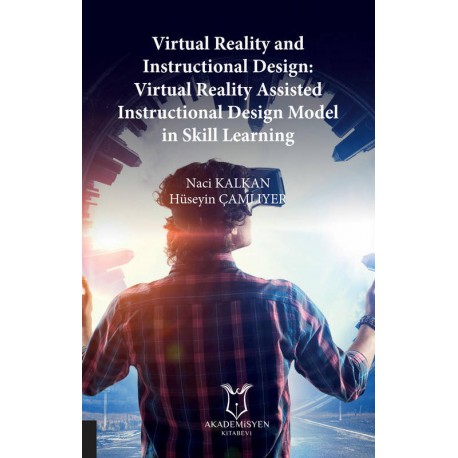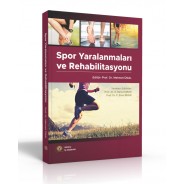Sipariş listesinde ürün yok
Ürün başarıyla alışveriş sepetinize eklendi
Sepetinizde 0 ürün bulunmaktadır. Sepetinizde 1 ürün bulunmaktadır.
SPOR BİLİMLERİ
- Tıp Kitapları
- Acil Tıp
- Adli Tıp ve kriminoloji
- Aile Hekimliği
- Alerji ve İmmünoloji
- Anatomi
- Anesteziyoloji ve Ağrı
- Biyoloji ve Genetik
- Biyomedikal Mühendisliği
- Biyokimya
- Çocuk Cerrahisi
- Çocuk Sağlığı ve Hastalıkları
- Çocuk ve Ergen Psikiyatrisi
- Dahiliye
- Dermatoloji
- Endokrinoloji
- Farmakoloji
- Fiziksel Tıp ve Rehabilitasyon
- Fizyoterapi, Rehabilitasyon ve Spor Hekimliği
- Fizyoloji
- Gastroenteroloji
- Geleneksel ve Tamamlayıcı Tıp
- Genel Cerrahi
- Geriatri
- Göğüs Hastalıkları
- Kalp Damar Cerrahisi
- Göz Hastalıkları
- Halk Sağlığı
- Hematoloji
- Histoloji ve Embriyoloji
- İnfeksiyon Hastalıkları
- Kadın Hastalıkları ve Doğum
- Kardiyoloji
- Kulak Burun Boğaz Hastalıkları
- Mikrobiyoloji immunoloji
- Nöroşirürji
- Nefroloji
- Nöroloji
- Nükleer Tıp
- Onkoloji
- Ortopedi ve Travmatoloji
- Patoloji
- Plastik Cerrahi
- Sağlıklı Yaşıyoruz
- Spor Hekimliği
- Psikiyatri
- Radyasyon Onkoloji
- Radyoloji
- Romatoloji
- Tıp Tarihi ve Tıp Etiği
- Tıbbı İstatistik Araştırma
- Tıp ve Sağlık Hukuku
- Tıbbi Laboratuvar Deney Bilimi
- USMLE & Board Review
- Üroloji
- Yoğun Bakım
- Göğüs Cerrahisi
- Uyku Tıbbı
- Diş Hekimliği Kitapları
- Eczacılık Kitapları
- Beslenme ve Diyet Kitapları
- Veteriner Hekimlik
- DUS Kitapları
- DUS Akademi Konu Kitapları Serisi
- DUS için Açıklamalı Deneme Sınavları Serisi
- DUS Spot Bilgiler Serisi
- Miadent Konu Kitapları Serisi
- Miadent Soru Kitapları Serisi
- DUS Çıkmış Soru Kitapları
- DUSDATA Şampiyonların Notu
- DUS Review Serisi
- DUSDATAMAX Soru Kitapları Serisi
- DUS Akademi Soru Kitapları Serisi
- Diğer Kitapları Serisi
- TUS Kitapları
- Çıkmış TUS Soru Kitapları
- 41 Deneme Serisi
- MEDOTOMY Serisi
- Tusmer
- Klinisyen Konu Kitapları Serisi
- Optimum Serisi
- Premium Serisi
- PRETUS Deneme Sınavları Serisi
- ProspekTUS Serisi
- Klinisyen Soru Kitapları Serisi
- Tusdata Ders Notları
- Tıbbi İngilizce
- Vaka Soruları Serisi
- Tüm Tus Soruları
- Hızlı Tekrar Serisi
- UTS Serisi
- KAMP ÖZEL NOTLARI
- Meditus Serisi
- YDUS Kitapları
- Hemşirelik ve Ebelik kitapları
- HEMŞİRELİK / halk sağlığı
- HEMŞİRELİK / Hemşirelik Esasları
- HEMŞİRELİK / İç Hastalıkları
- HEMŞİRELİK / Cerrahi Hastalıkları
- HEMŞİRELİK / Kadın hastalıkları ve doğum Ebelik
- HEMŞİRELİK / Ruh Sağlığı ve Hastalıkları
- HEMŞİRELİK / Hemşirelikte Eğitim
- HEMŞİRELİK / Çocuk Sağlığı ve Hastalıkları
- HEMŞİRELİK / Acil tıp hemşireliği
- SAĞLIK BİLİMLERİ
- Çocuk Gelişimi
- Sağlık Yöneticiliği
- Optisyenlik
- Odyoloji
- Saç Bakımı ve Güzellik Hizmetleri
- Anestezi Teknikerliği
- Tıbbi Dökümantasyon ve Sekreterlik
- Tıbbi Laboratuvar Teknisyenliği
- İş Sağlığı ve Güvenliği
- Ergoterapi
- Ağız ve Diş Sağlığı Teknisyenliği
- Dil ve Konuşma Terapisi
- İlk ve Acil Yardım Teknikeri (Paramedik)
- Radyoloji Teknisyenliği
- EĞİTİM BİLİMLERİ
- Değerler Eğitimi
- Eğitim Programları ve Öğretim
- Eğitim Psikolojisi
- Eğitim Yönetimi ve Denetimi
- Eğitimde Drama
- Eğitim Temelleri
- Eğitim Teknolojileri
- Okul Öncesi Eğitim
- Ortaokul Öğretmenliği
- Öğretmenlik Eğitimi Bölümleri
- Ölçme ve Değerlendirme
- Özel Eğitim
- Psikolojik Danışmanlık ve Rehberlik
- Sınıf Öğretmenliği
- Sınıf Yönetimi Etkili Öğretim
- İLETİŞİM
- İŞLETME
- İKTİSAT / EKONOMİ / MALİYE
- MİMARLIK - SANAT
- BİLİM TEKNİK
- MÜHENDİSLİK - TEKNİK
- FEN BİLİMLERİ
- ÇOCUK VE GENÇLİK KİTAPLARI
- BEŞERİ/SOSYAL BİLİMLER
- ÇEVRE ve YER BİLİMLERİ
- GIDA TARIM ve HAYVANCILIK
- BİYOMEDİKAL MÜHENDİSLİĞİ
- SEYAHAT TURİZM
- SOSYAL ÇALIŞMALAR
- SPOR BİLİMLERİ
- YÖNETİM - SİYASET - ULUSLARARASI İLİŞKİLER
- SINAVLAR HAZIRLIK
- ÖNERİLEN ÜRÜNLER
- Çok Satan Romanlar
- E-Kitaplar
- AYBAK
- Kırtasiye
 Daha büyük görüntüle
Daha büyük görüntüle Virtual Reality and Instructional Design: Virtual Reality Assisted Instructional Design Model in Skill Learning
9786257106719
170,00 TL
136,00 TL
-20%
KDV Hariç: 136,00 TL
- Yorum Yaz
1. CHAPTER
Introduction
2. CHAPTER
Virtual Reality
2.1. Concept of Virtual Reality
2.2. Historical Development of Virtual Reality
2.3. Virtual Reality System
2.3.1. Classification of Virtual Reality Systems
2.3.1.1. Fully-Immersive Systems
2.3.1.1.1. HTC VIVE
2.3.1.2. Semi-Immersive Systems
2.3.1.3. Non-Immersive Systems
2.3.1.4. Virtual Reality Headsets
2.3.1.4.1. Head-Mounted Display Headsets (HMD)
2.3.1.4.2. Mobile Based Virtual Reality
2.4. Virtual Reality and Learning
2.4.1. Advantages of Virtual Reality in Education
2.4.1.5. Realism
2.4.1.6. Entertainment
2.4.1.7. Motivation
2.4.1.8. Effectiveness
2.4.1.9. Practicality
2.4.1.10. Opportunity to Repeat
2.4.1.11. Instructive
2.4.1.12. Time
2.4.1.13. Variation
2.4.1.14. Experience
2.4.1.15. Place
2.5. Virtual Reality and Physical Activity
2.6. Studies on Virtual Reality
2.7. Virtual Reality and Learning Theories
2.8. Virtual Reality and Constructivism
2.9. Instructional Design
2.9.1. Instructional Design Models
2.9.1.1. Dick and Carey Model
2.9.1.2. Hannafin and Peck Model
2.9.1.3. Knirk and Gustafson Model
2.9.1.4. Jerrold Kemp Model
2.9.1.5. Gerleach and Ely Model
2.9.1.6. Rapid Prototype Model
2.9.1.7. Romiszowski Model
2.9.1.8. Syracuse Model
2.9.1.9. Diamond Model
2.9.1.10. Gagne, Briggs and Wager Model
2.9.2. Virtual Reality and Instructional Design Models
2.9.2.1. Chen’s Model
2.9.2.2. Hanson and Shelton’s Model
2.9.2.3. Goodwin et al. Instructional Design Model
2.9.2.4. Instructional Design Model of Salzman
2.9.2.5. Lee and Dalgarno’s 3D Virtual Learning
Environment Model
2.9.3. Instructional Design Conducted in the titled
‘Research of the Effectiveness of Virtual Reality
Technology in Basic Technical Skill Learning: The Example
of Table Tennis’ Doctoral Dissertation
References
| ISBN | 9786257106719 |
| Basım Yılı | 2020 |
| Sayfa Sayısı | 83 |
| Kitap Dili | İngilizce |
| Yazar(lar) | Naci KALKAN, Hüseyin ÇAMLIYER |













